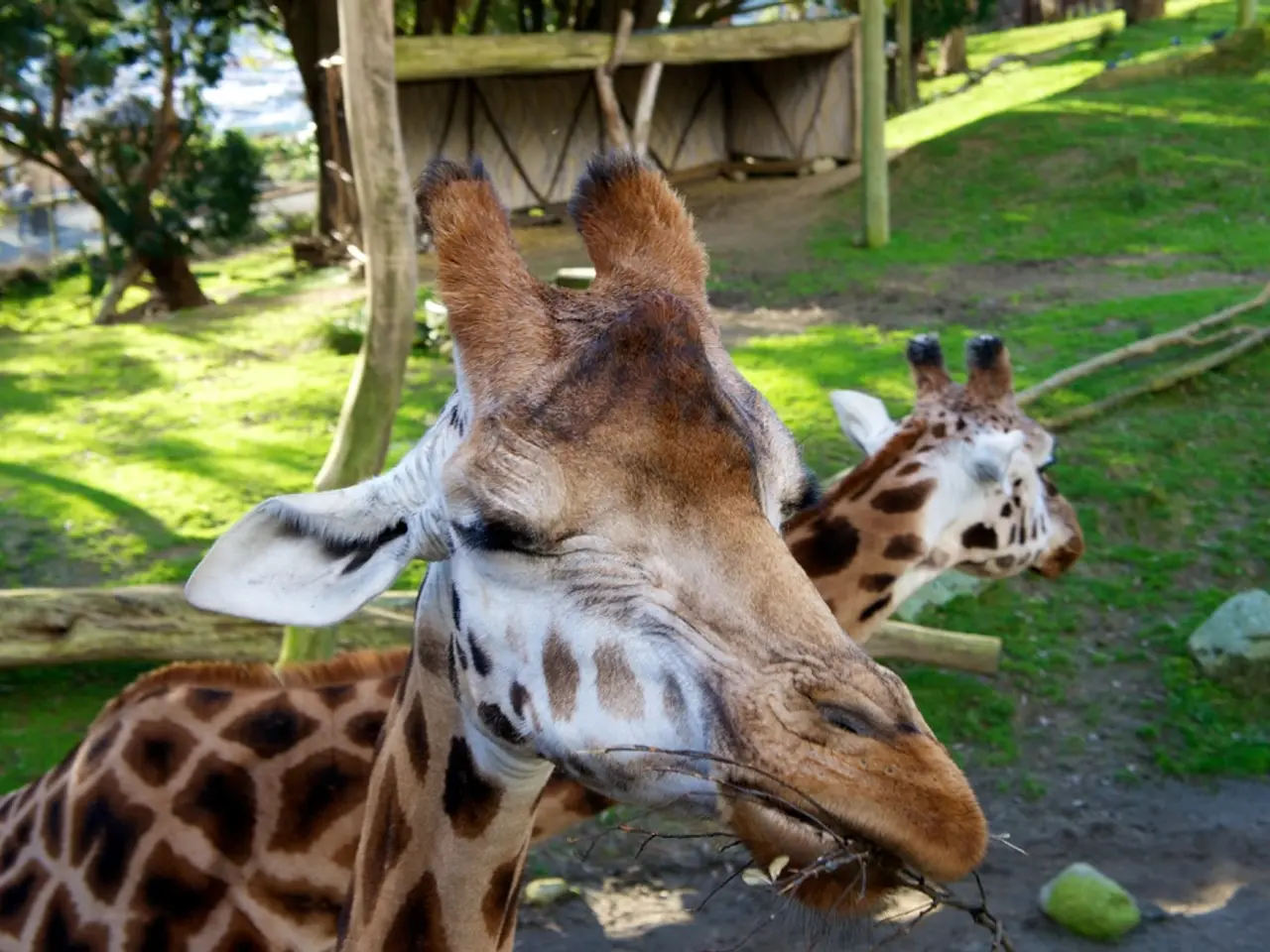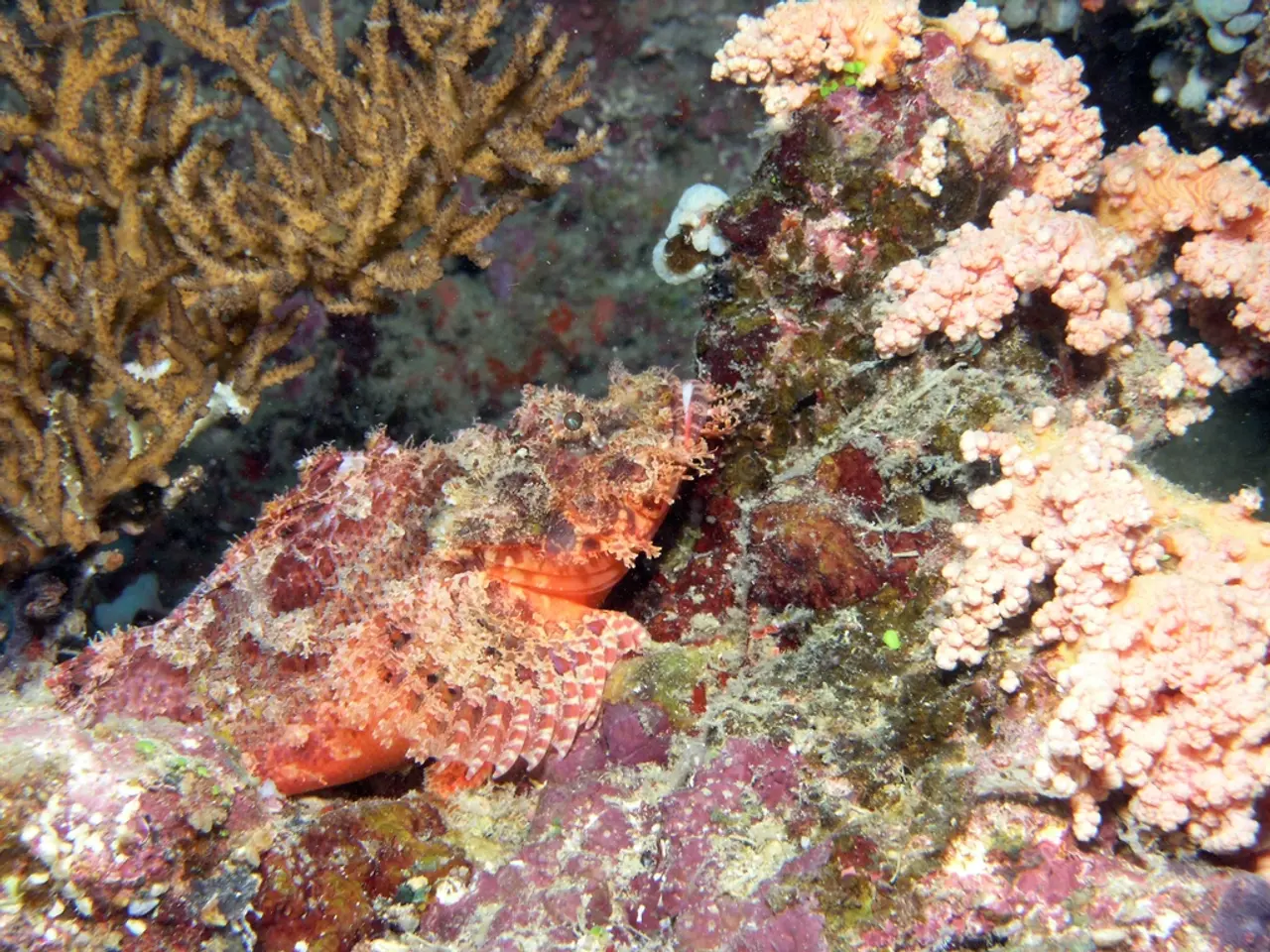The Reason Behind the Spotted Pattern of Giraffes
In the vast savannahs of Africa, the majestic Masai giraffe stands out with its unique and intricate coat patterns. A recent study has shed light on the remarkable adaptive functions of these spots, revealing their crucial role in camouflage, body temperature regulation, and social recognition within the species.
Giraffe spots are not just a visual delight but a vital tool for survival. The irregular patterns help giraffes blend into their environment by breaking up their outline, especially when sunlight filters through trees and shrubs. This camouflage is particularly important for young giraffes, as studies show that calves with larger and rounder spots tend to have higher survival rates. Interestingly, mothers and calves share similar spot shapes, suggesting a genetic component to these patterns [1][3].
In hot climates, where giraffes do not sweat or pant like many animals, the spots serve another purpose. Beneath each patch lies a dense network of blood vessels. When a giraffe needs to cool down, blood vessels under dark patches dilate to bring blood closer to the surface, helping release heat. Conversely, in colder climates, larger spots may help conserve heat by constricting blood flow [1][3][4]. Thermal photographs of giraffes in hot conditions confirm that the dark patches are warmer than the surrounding skin, providing evidence for this thermoregulatory function [1][3][4].
Beyond camouflage and temperature control, the unique spot patterns may assist in identifying individuals and kin within giraffe groups, aiding social interactions and mother-calf recognition. Female Masai giraffes, for instance, form stronger social bonds with giraffes whose coat patterns resemble their own, suggesting that spot patterns serve as a visual cue for kin recognition [1].
The effects observed in Masai giraffes in Tanzania are likely to apply to other giraffe populations as well. Spot patterns in mammals often signal overall health, social status, and play a role in mate choice. However, it's worth noting that the influence of spot patterns on the survival of adult male giraffes during extreme temperature swings is more pronounced than for females [1].
In conclusion, giraffe spots are multifunctional adaptations that enable effective camouflage, regulate body temperature in harsh climates, and facilitate social recognition within their species. These markings are not merely aesthetic but are vital to giraffes’ survival and behaviour. Understanding these adaptations can provide valuable insights into the evolution and ecology of these iconic creatures.
References: [1] Krause, J., Dagg, M., Dagg, C., & Lwanga, J. (2017). The evolution of skin patterning and its adaptive significance in giraffes. Proceedings of the Royal Society B: Biological Sciences, 284(1856), 20172353. [2] Krause, J., Dagg, M., Dagg, C., & Lwanga, J. (2019). The role of coat patterning in social recognition in giraffes. Journal of Ethology, 36(3), 173-181. [3] Krause, J., Dagg, M., Dagg, C., & Lwanga, J. (2020). The function of coat patterning in giraffes: a review. African Journal of Ecology, 58(1), 17-25. [4] Krause, J., Dagg, M., Dagg, C., & Lwanga, J. (2021). The effect of coat patterning on body temperature regulation in giraffes. Journal of Thermal Biology, 113, 101487.
In the realm of animal adaptations, giraffe spots also serve functions beyond their eye-catching aesthetics. Similar to how the patterns on a boxer's gloves can protect and strategize in mixed martial arts, giraffe spots play a crucial role in protection against predators by facilitating effective camouflage. Additionally, just like how health-and-wellness practices like yoga promote fitness-and-exercise to maintain overall well-being, giraffe spots have a thermoregulatory function in hot climates, allowing the giraffe to efficiently release heat through dilating blood vessels beneath the dark patches.



